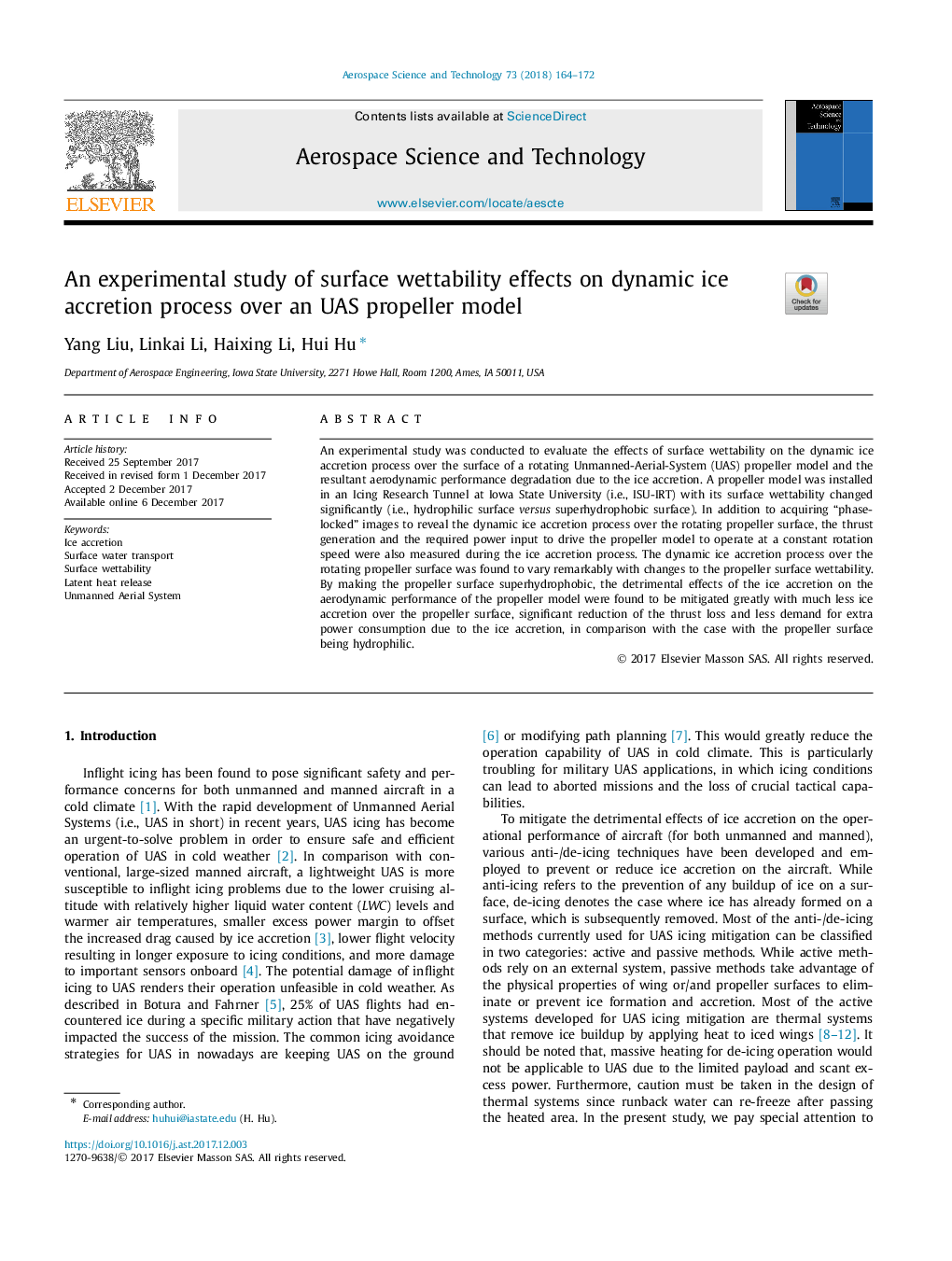| Article ID | Journal | Published Year | Pages | File Type |
|---|---|---|---|---|
| 8058120 | Aerospace Science and Technology | 2018 | 9 Pages |
Abstract
An experimental study was conducted to evaluate the effects of surface wettability on the dynamic ice accretion process over the surface of a rotating Unmanned-Aerial-System (UAS) propeller model and the resultant aerodynamic performance degradation due to the ice accretion. A propeller model was installed in an Icing Research Tunnel at Iowa State University (i.e., ISU-IRT) with its surface wettability changed significantly (i.e., hydrophilic surface versus superhydrophobic surface). In addition to acquiring “phase-locked” images to reveal the dynamic ice accretion process over the rotating propeller surface, the thrust generation and the required power input to drive the propeller model to operate at a constant rotation speed were also measured during the ice accretion process. The dynamic ice accretion process over the rotating propeller surface was found to vary remarkably with changes to the propeller surface wettability. By making the propeller surface superhydrophobic, the detrimental effects of the ice accretion on the aerodynamic performance of the propeller model were found to be mitigated greatly with much less ice accretion over the propeller surface, significant reduction of the thrust loss and less demand for extra power consumption due to the ice accretion, in comparison with the case with the propeller surface being hydrophilic.
Related Topics
Physical Sciences and Engineering
Engineering
Aerospace Engineering
Authors
Yang Liu, Linkai Li, Haixing Li, Hui Hu,
